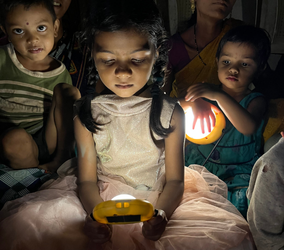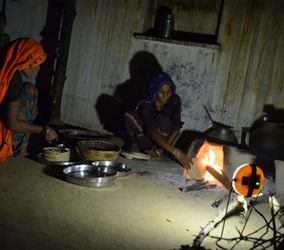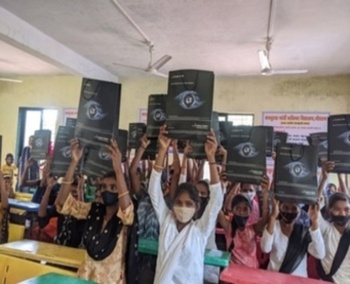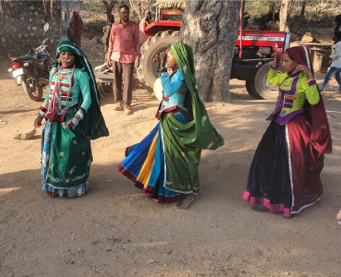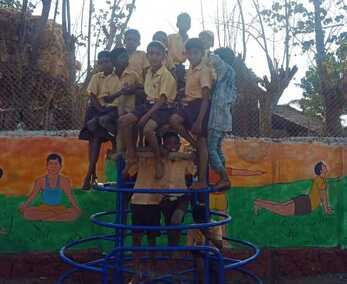How Does Solar Energy Work to Light Up Rural India?
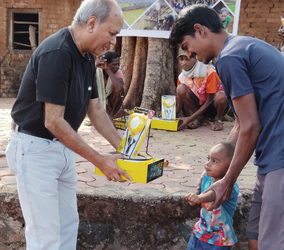
A simple panel on a rooftop can power an entire home! Ever wondered how?
Or how villages that were once in complete darkness are now brightly lit? That’s the magic of solar energy. But how does solar energy work?
You must have heard about solar panels, clean and sustainable energy, and also about reducing carbon footprints—but what’s the science behind it? How do we do it? And more importantly, how does solar energy improve lives in rural India?
Let’s break it down simply. Whether you’re a curious learner or someone looking to support a solar power NGO like Project Chirag, you’ve reached the right place. This blog will guide you through the fascinating journey of how solar energy works and why it matters. Also, we’ll tell you how you can play a role in this movement towards sustainability.
How Does Solar Energy Work? Making it Easy!
It’s easy to overlook how something as simple as sunlight could be so powerful! It all starts with the sun.
Solar panels are made up of special photovoltaic cells. It is these cells that absorb sunlight and turn it into electricity. It’s a fascinating process called the photovoltaic effect. That’s how solar energy works in the simplest of terms. It’s interesting to note that this energy is clean, green, sustainable, and reliable, and can even work in places where grid electricity is unavailable.
The step-by-step process:
- Solar panels need to be installed in places that receive maximum sunlight exposure. Hence, they can often be spotted on rooftops or open fields. Now, when sunlight hits the solar panels, the process starts.
- The photovoltaic (PV) cells inside these panels absorb sunlight and convert it into direct current (DC) electricity.
- An inverter then converts DC into alternating current (AC). Making it suitable for use at homes and by appliances.
- The electricity flows through a wiring system to power lights, fans, TVs, water filters, basically anything that’s connected to the circuit.
How Does Solar Energy Work for Rural Development?
Beyond the buzzing cities lies a different India – its villages, where people more often than not struggle to meet their basic human needs. It’s important to know that a large part of India’s population, over 65%, resides in villages. But post sunset, a large number of villages go into darkness, and power cuts are widespread. This presents a sad state for nearly two-thirds of India’s population. This is where solar energy acts as a saviour. It steps in as a clean alternative to traditional electricity, helping to solve energy poverty today and tomorrow.
India is doing better in this direction. It will add a massive solar module production capacity of 100 GW by 2030. Over the past decade, this has increased to 60 GW by 2024. No wonder India is one of the world’s fastest-growing solar energy markets! Although the growth is impressive, the benefits haven’t reached every corner of the country. There still exist rural areas that are isolated and left behind. That’s where solar power project NGOs like Project Chirag come into play, lighting up every home.
Here’s how solar energy is used for rural development:
- Education: Lights and fans make the classrooms more comfortable for children. The presence of computers and smart TVs powered by solar energy enables digital learning, making the entire educational experience more dynamic.
- Healthcare: Solar power enables refrigeration for vaccines, powers diagnostic tools, and ensures night-time emergency care. Last-minute emergencies don’t have to be met with inconsistent grid electricity in village clinics.
- Agriculture: Solar irrigation pumps reduce diesel dependency and allow farmers to grow crops year-round. Thus increasing the yield and ensuring food security in areas more susceptible to droughts and floods.
- Livelihoods: Small businesses and cold storage can run on solar energy, reducing costs and increasing reliability. Solar energy helps rural entrepreneurs like never before. It has opened doors to numerous opportunities.
- Safety: Solar-powered streetlights have made the isolated streets of villages safer. More so for women and children. By deterring wildlife and theft, it enables community activities long after the sun sets.
These multi-sector benefits highlight how solar energy serves as a catalyst for development beyond mere electrification.
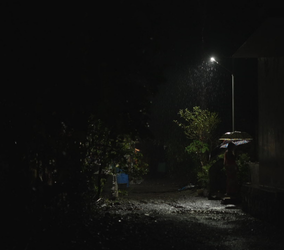
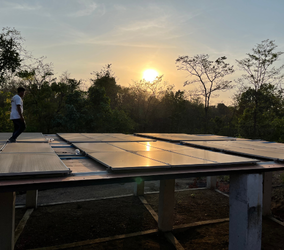
Project Chirag: Lighting Up Lives, One Village at a Time
Project Chirag is not just installing solar panels—it’s transforming lives. Let’s look at a few case studies that highlight how impactful solar energy can be:
Savroli Village, Maharashtra
In the remote village of Savroli, the ZP Upper Primary School lacked basic electricity. Project Chirag ensured the school gets access to solar power and set up a fully functional computer lab. For the first time, children could engage in digital learning. Reliable electricity also enabled sanitation and nutrition programs, and the entire school environment saw a massive uplift. Parents became more engaged, and student attendance improved.
Pingeman Village, Maharashtra
Agriculture in Pingeman was dependent on erratic rainfall, and most villagers migrated seasonally for work. Project Chirag installed a 7.5hp solar pump for irrigation, enabling year-round farming. A 3.5 kW solar system powered the village school, supported solar cookers for midday meals, and streetlights for safety. A solar-powered water filtration unit ensured clean drinking water. The impact? Over 450 villagers now have improved livelihoods, better education, and access to good healthcare.
Karjat’s Anganwadis
Twenty anganwadi centres in Karjat were struggling with unreliable electricity, inadequate learning materials, and health hazards. Project Chirag, with support from Alleima, installed solar off-grid PV systems, smart TVs, water filters, and conducted training sessions for Anganwadi workers. Today, over 1,176 lives have been positively impacted. Children learn better, health has improved, and women frontline workers are empowered.
Summing Up
When you understand how solar energy works, you begin to see its true power – not just as a source of electricity, but also as a tool for promoting equity. Access to energy equals access to opportunity. It enables students to learn, farmers to grow, and health workers to save lives.
At Project Chirag, we know that through every solar panel we install, it’s not just homes that we’re lighting, but futures! We take pride in powering dreams and sustainably, so to speak!
You can donate for a solar panel project by contributing to an NGO that operates a solar power project NGO. Every act of yours, whether donating, volunteering, or simply sharing these stories, helps amplify our efforts towards a brighter tomorrow.
So the next time someone asks, “How does solar energy work?”, tell them: it’s sunshine, converted by science, and driven by the human spirit to make the world brighter.
Explore our work or donate for solar panel project today.
